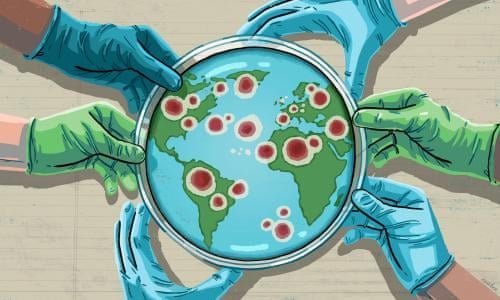After COVID-19, What Could be the Next Global Pandemic?
Most of the planet was caught off guard by the Covid-19 pandemic.
However, this is not the case for all. Epidemiologists and other experts have cautioned for years that we are putting ourselves at risk of a global pandemic. 75% percent of the newly emerging diseases currently affecting humans originate in animals.

Below are the 6 diseases which are most likely to cause the next global pandemic.
Bats in Asia
The Nipah virus is one of the World Health Organization's top ten priority diseases that could cause a pandemic, according to the organization. There is no antidote, it is extremely lethal, and many outbreaks have already occurred in Asia. Overdevelopment and encroachment on bat habitat, according to scientists studying the epidemic, are making another spillover more likely.Mosquitoes in North America
Mosquito-borne diseases kill nearly one million people per year and infect 700 million more, accounting for nearly one out of every ten people on the planet. Scientists at the US military base in Cuba, Guantanamo Bay, have discovered a deadly mosquito species that has never been seen in the Western Hemisphere before. It was most likely brought to North America disguised in shipping containers from Asia, and it could soon spread Zika and other deadly diseases across the continent.Camels in Africa
Mers is a much more lethal coronavirus than Covid-19. It is spread by camels, which provide milk and meat to millions of people in Africa and the Middle East. Scientists expect a camel epidemic as a result of climate change and overpopulation putting more people into contact with camels.Pigs in Europe
The pig pandemic has arrived. The global outbreak of H1N1, or swine flu, in 2009 may have prompted factory farm reforms around the world. Farmers in Europe, on the other hand, are no longer expected to vaccinate themselves or their herds, or to report the disease if they encounter it.Monkeys in South America
Despite the fact that there is a vaccine for yellow fever, the disease infects 200,000 people per year and kills 30,000 of them – more than terrorist attacks and plane crashes combined. Outbreaks are becoming more common as humans encroach on Brazil's forests. Yellow fever may now be spreading from humans to monkeys and back, according to scientists. They've launched a monkey vaccine campaign in the hopes of shielding humans from a deadly disease.Possums in Australia
Buruli ulcers are a form of ulcer that originated in Uganda and has recently spread to Australia. It is classified as a “neglected” foreign disease that receives no funding or testing. Scientists are trying to figure out what role possums and humans play in the spread of this flesh-eating bacteria, as well as whether it can spread further across the globe.